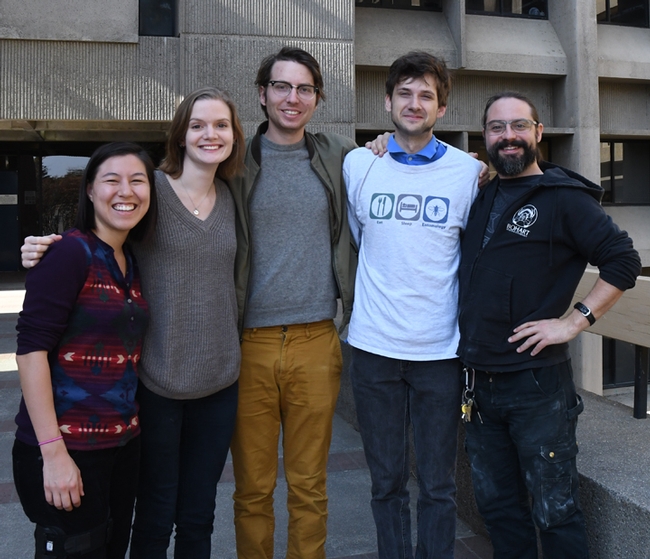- Author: Kathy Keatley Garvey
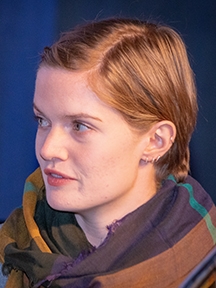
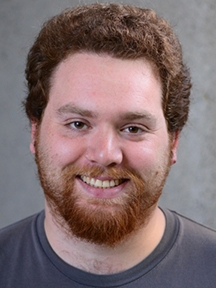
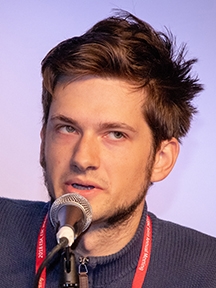
That's just some of the information to be showcased at the UC Davis Biodiversity Museum Month program on Saturday, Feb. 13 from 11 a.m. to noon when three doctoral students in the Phil Ward lab, UC Davis Department of Entomology and Nematology, take the helm. Oberski, a fourth-year doctoral student, and Ziv Lieberman, a first-year doctoral student, will talk about the diversity of ants and field questions, followed by doctoral candidate Zach Griebenow's presentation on his research.
Then on Saturday, Feb. 20, from 11 a.m. to noon, Professor Phil Ward will host "All About Ants," billed as a "fun and lively question and answer session." The programs are free and family friendly. See http://biodiversitymuseumday.ucdavis.edu/live-programs.html for the Zoom links.
Zach Griebenow
Griebenow grew up in rural Kentucky and received his bachelor's degree in entomology in 2017 from The Ohio State University, undertaking undergraduate research with distinction on species boundaries in the Puerto Rican fauna of the subterranean termite Heterotermes (Griebenow et al. 2017).
"As so everyone in the Ward lab, I study how different groups of ants are related to one another, and why they look and behave the way that they do," he said. "Specifically I study an obscure group called the Leptanillinae, which have no common name. As ants go, they are strange, and we know very little about them. So far, I have confidently teased out the major evolutionary relationships among leptanilline ants (Griebenow 2020; Griebenow, in press), but there is a lot more work to be done, particularly in comprehending the often bizarre structural modifications seen in the male Leptanillinae (legs that look like toothbrushes, etc.)."
Ziv Lieberman
Lieberman, born and raised in California, studied at the College of Marin before transferring to UC Davis to major in evolution, ecology and biodiversity, with a minor in insect evolution and ecology. "Prior to UC Davis, I spent several years working abroad for the California Academy of Science documenting historical ant specimens," Lieberman said. "At the end of my undergrad, I published my first paper, a revision of the poorly-understood (and very cute) African species of the ant genus Discothyrea."
In the Ward lab, Lieberman studies "ant evolution, specifically focusing on connecting evolutionary relationships (the ant 'family tree') with anatomy, using a combination of next-generation imaging techniques and large-scale genetic analyses. In particular, I am interested in describing and comparing internal anatomical features which are usually ignored, and understanding how these traits contribute to biodiversity."
Jill Oberski
Oberski grew up in Minnesota. "I was fascinated by insects from a very young age," she said. "I attended Macalester College, spent a few confused years on a pre-med track, and ultimately discovered a career in entomology was feasible and worth pursuing. This has led me to Phil Ward's ant systematics lab at UC Davis, where I'm now a PhD candidate."
"My research centers on the ant genus Dorymyrmex, which is commonly found all over the Americas," Oberski said. "Even though they're extremely common (Davis itself is home to two species!), we have no idea how many species there really are. In addition to discovering and naming these species, I'm really interested in biogeography and ancient history: Where did Dorymyrmex originate? How are the North American species related to the South American species? And how did they disperse before the isthmus of Panama was connected?"
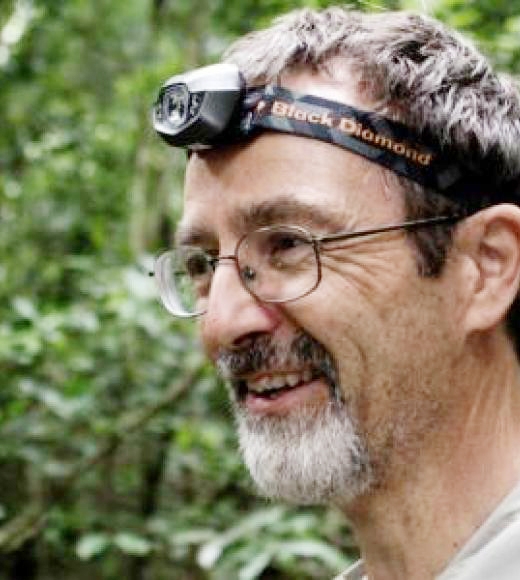
Professor Ward teaches California insect diversity, insect taxonomy and field ecology, and introductory biology (the tree of life). His research interests include systematics, biogeography and evolution of ants; ant-plant mutualisms; phylogeny and speciation. He holds a bachelor of science degree in biology from Queens University, Canada (1973) and a doctorate in zoology from the University of Sydney, Australia (1979).
Due to the COVID-19 pandemic, the 10th annual UC Davis Biodiversity Museum program is all virtual this year via webinars and pre-recorded presentations, and takes place throughout the month of February. The science-based event traditionally occurs on only one day--the Saturday of Presidents' Weekend, when families and friends gather on campus to learn first-hand about the UC Davis museums and collections.
This year's biodiversity event is showcasing 12 museums or collections:
- Anthropology Museum
- Arboretum and Public Garden
- Bohart Museum of Entomology
- Botanical Conservatory
- California Raptor Center
- Center for Plant Diversity
- Häagen-Dazs Honey Bee Haven
- Nematode Collection
- Marine Invertebrate Collection
- Museum of Wildlife and Fish Biology
- Paleontology Collection
- Phaff Yeast Culture Collection
For more information and the schedule, access these two formats on the UC Davis Biodiversity program website: (1) live talks and demonstrations and (2) pre-recorded talks and activities. Information on the biodiversity museum events also appear on social media, including Facebook, Instagram, and Twitter, @BioDivDay.
To help support the Biodiversity Museum event, contributions are being accepted through a month-long crowdfunding campaign program at https://crowdfund.ucdavis.edu/project/24310.
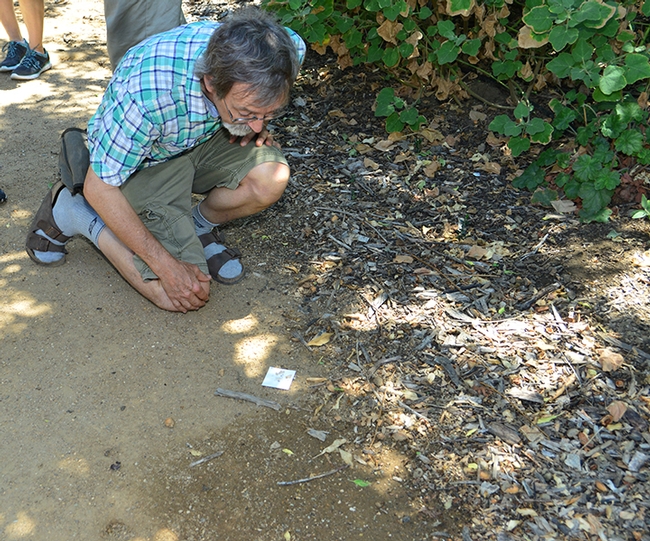
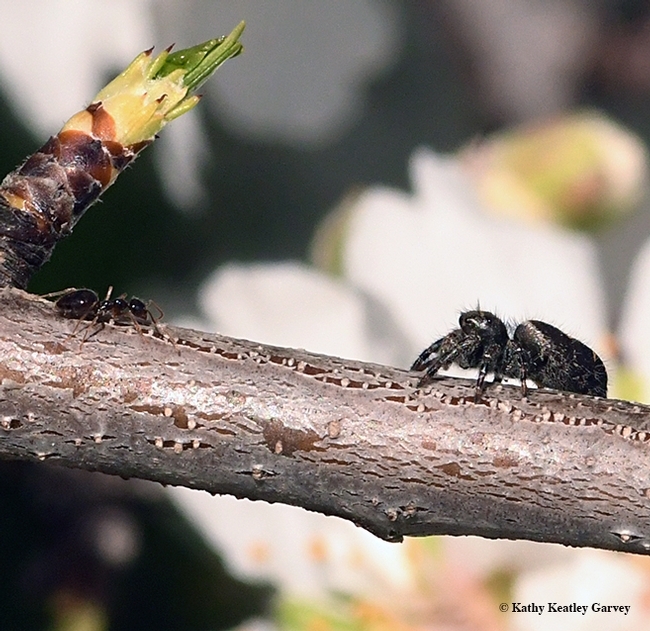
- Author: Kathy Keatley Garvey
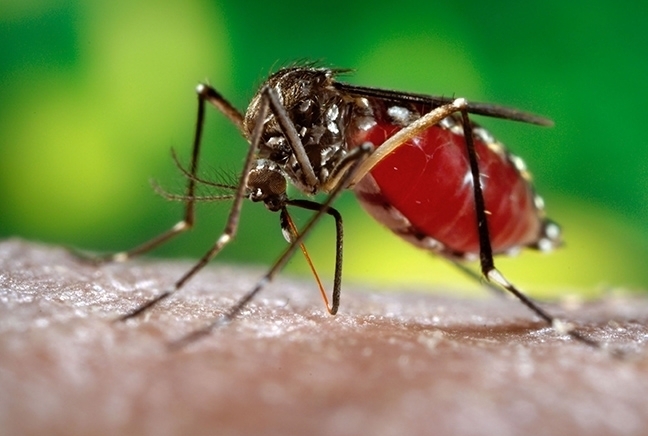
The UC Davis winners, all doctoral students, are Erin Taylor Kelly of the Geoffrey Attardo lab, Hyoseok Lee of the Christian Nansen lab, Jill Oberski of the Phil Ward lab, Lacie Newton of the Jason Bond lab, and Clara Stuligross of the Neal Williams lab.
- Kelly won first place for her poster, “Metabolic Snapshot: Using Metabolomics to Compare Near-Wild and Colonized Aedes aegypti,” in the Physiology, Biochemistry and Ecology Section.
- Lee won first place for his entry, “Predicting Spring Migration of Beet Leafhoppers, Circulifer tenellus (Hemiptera: Cicadellidae) from Natural Overwintering Sites into Tomato fields in California" in the Graduate 10-Minute Papers category of the Plant-Insect Ecosystems, Behavioral Ecology Section
- Oberski won first place for her entry, “Why Do Museum Collections Matter?” in the Graduate Infographics category, Systematics, Evolution and Biodiversity Section.
- Newton won second place for her entry, “Integrative Species Delimitation Reveals Cryptic Diversity in the Southern Appalachian Antrodiaetus unicolor (Araneae: Antrodiaetidae) Species Complex,” in the Graduate 10-Minute Papers category in the Systematics, Evolution and Biodiversity Section, Genomics.
- Stuligross won second place for her entry, "Larval Pesticide Exposure Reduces Adult Wild Bee Reproduction,” in the Graduate 10-Minute Papers category in the Plant-Insect Ecosystems, Pollinators 2 Section.
The first-place winners received a $75 cash prize, a one-year membership in ESA and a certificate, while the second-place winners won a year's membership and a certificate.
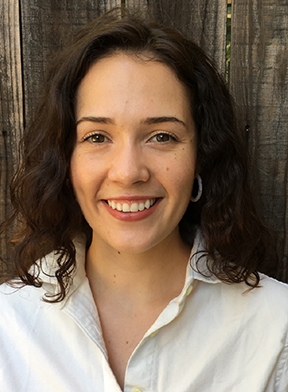
Erin Taylor Kelly of the Geoffrey Attardo lab expects to receive her doctorate in June 2023. She holds a bachelor of science degree in biology (2016) from Santa Clara University, where she minored in chemistry, with an emphasis in molecular an cell biology.
On her Aedes aegypti poster:
Research in our lab has identified significant variability in the resistance phenotype of mosquitoes with target-site mutations, prompting us to wonder about the metabolic mechanisms involved in resistance in California populations of Aedes aegypti. The resistance phenotype is thought to have multiple fitness costs, including reduced fecundity, adult body size and longevity (6–9). We hypothesize that looking at the insect's metabolome may allow us to better understand the physiology behind these potential fitness costs by providing a snap shot of the insect's metabolite composition and insight into pathway demands and energetic deficiencies. Metabolomics has the benefit of providing insight into mosquito biology at the level of phenotype.
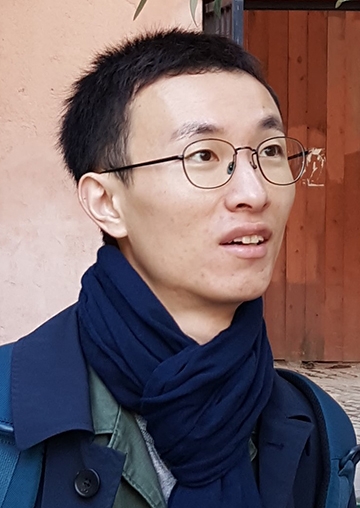
Hyoseok Lee, who joined the Christian Nansen lab in 2017, holds a master's degree in entomology (2014) from Seoul National University.
The abstract:
Most of tomato production in California occurs in the Central Valley, which has “the foothills” as its western boundary. Beet leafhoppers overwinter in green natural vegetation in the foothills and migrate into crop fields, including tomato, during spring as natural vegetation dries out and green crop vegetation becomes available. In this study, we built a simulation model predicting spring migration of beet leafhoppers based on vegetation greenness in the foothills. Vegetation greenness (EVI, Enhanced vegetation index) in the foothills was calculated based on analyses of satellite imagery. Spring migration of s was monitored at three different locations in the foothills for two years using yellow sticky cards. Spring migration of beet leafhoppers was well described by the Weibull function. At all monitoring locations, the spring migration was started when the EVI values dropped to 0.2, and the proportion of migrating beet leafhoppers rapidly increased as the EVI values decreased. Our study indicates that the decrease in vegetation greenness triggers spring migration of beet leafhoppers and shows great potential for developing an early warning system.
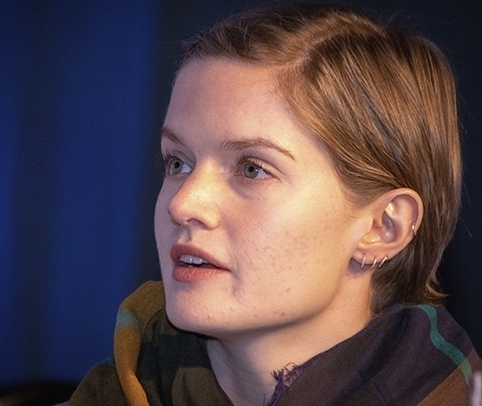
Jill Oberski, who joined the Ward lab in 2017, holds a bachelor of arts degree, cum laude, from Macalester College, St. Paul, Minn., where she majored in biology and German studies.
Why Do Museum Collections Matter?
"Cabinets of curiosity” and natural history museums are the original basis of our knowledge of global biodiversity. Such collections, however, are more than just well-organized dead organisms. Museums are enormous libraries of identified species, localities, and dates, constantly updated and reorganized based on the best new information. These data inform countless fields of research, and can even answer future questions no one has yet thought to ask. Most importantly, they preserve irreplaceable type specimens, which are a crucial part of species description. Now that many of these insect collections are being digitized and accessed from around the globe, why is it necessary to maintain them as physical materials? While many datasets do lend themselves well to digitization, insect specimens experience significant data loss. Most commonly, photographs are taken of the specimens, but photos are usually inadequate for discerning taxonomic features. Even high-resolution 3D scans are no substitute for direct observations. Finally, museums are centers of education and public outreach. Through collections, biology students and communities can physically experience global insect biodiversity they might not otherwise see, regardless of location or mobility. The “wow” factor of magnificent specimens is most powerful in person. As our lives become increasingly computer-oriented, we must recognize that to enjoy and study nature, no digital replacement will suffice.
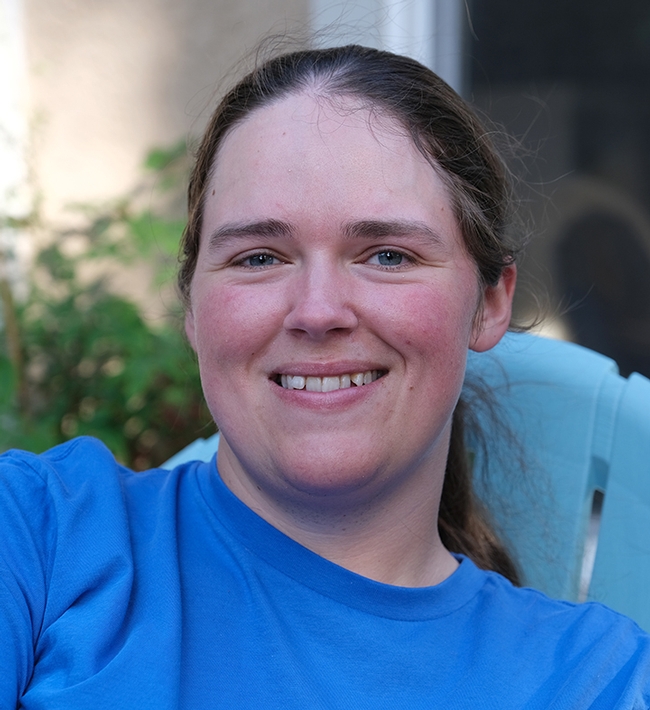
Lacie Newton of the Jason Bond lab, expects to obtain her doctorate in entomology in June 2022. She holds a bachelor of science degree in biological sciences (2016) from Millsaps College, Jackson, Miss.
The Abstract:
Although species delimitation can be highly contentious, the development of reliable methods to accurately ascertain species boundaries is an imperative step in cataloguing and describing Earth's quickly disappearing biodiversity. Spider species delimitation remains largely based on morphological characters; however, many mygalomorph spider populations are morphologically indistinguishable from each other yet have considerable molecular divergence. The focus of our study, the Antrodiaetus unicolor species complex containing two sympatric species, exhibits this pattern of relative morphological stasis with considerable genetic divergence across its distribution. A past study using two molecular markers, COI and 28S, revealed that A. unicolor is paraphyletic with respect to A. microunicolor. To better investigate species boundaries in the complex, we implement the cohesion species concept and use multiple lines of evidence for testing genetic exchangeability and ecological interchangeability. Our integrative approach includes extensively sampling homologous loci across the genome using a RADseq approach (3RAD), assessing population structure across their geographic range using multiple genetic clustering analyses that include structure, principal components analysis and a recently developed unsupervised machine learning approach (Variational Autoencoder). We evaluate ecological similarity by using large‐scale ecological data for niche‐based distribution modelling. Based on our analyses, we conclude that this complex has at least one additional species as well as confirm species delimitations based on previous less comprehensive approaches. Our study demonstrates the efficacy of genomic‐scale data for recognizing cryptic species, suggesting that species delimitation with one data type may underestimate true species diversity in morphologically homogenous taxa with low vagility.

Clara Stuligross, who joined the Neal Williams lab in 2016, received her bachelor of science degree in environmental studies, with minors in biology and outdoor education, in 2014 from Earlham College, Richmond, Ind.
The Abstract:
Bees encounter pesticides across landscapes as they forage for pollen and nectar. Exposure to pesticides has negative effects on wild bees, but little is known about the effects of chronic larval exposure on adult performance. We investigated the effects of larval and adult pesticide exposure on the foraging and reproduction of the solitary bee, Osmia lignaria. We established nesting O. lignaria females in 16 field cages containing wildflowers treated with or without imidacloprid, the most widely used neonicotinoid insecticide. As larvae, these parent bees were reared on provisions containing imidacloprid or controls. Larval and adult pesticide exposure directly affected bee nesting activity. Bees exposed to pesticides as adults were less likely to start nesting and produced fewer offspring. Additionally, bees exposed to pesticides as larvae provisioned fewer offspring than unexposed controls. Our research provides experimental evidence of the effects of pesticide exposure on solitary bees across multiple life stages, a critical step in understanding mechanisms underlying pollinator health.
The Entomological Society of America, headquartered in Annapolis, Md., and founded in 1889, is the largest organization in the world serving the professional and scientific needs of entomologists and people in related disciplines. They include educators, extension personnel, consultants, students, researchers, and scientists from agricultural departments, health agencies, private industries, colleges and universities, and state and federal governments. It is a scientific and educational resource for all insect-related topics. For more information, visit www.entsoc.org.
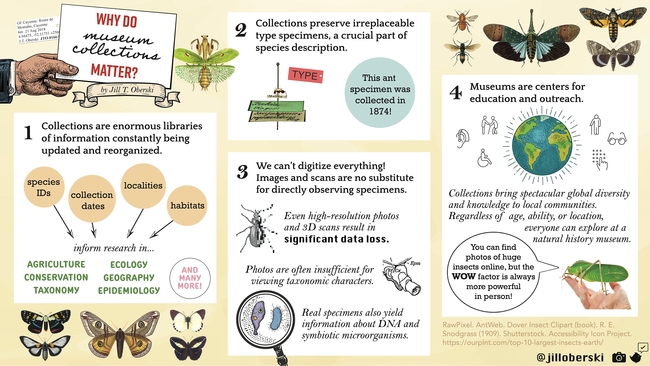
- Author: Kathy Keatley Garvey
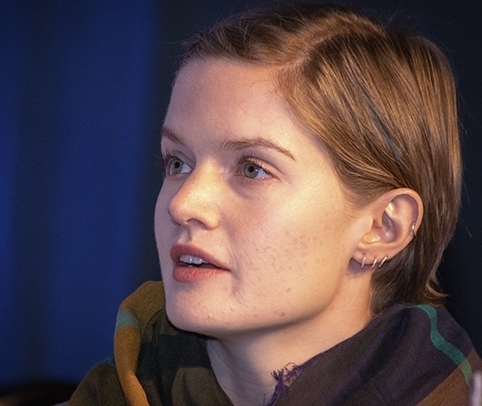
Jill Oberski, who studies with professor and ant specialist Phil Ward, submitted an infographic titled “Discovery and Diversity: The Importance of Systematic Entomology in Today's World in the Systems,” in the Evolution and Biodiversity (SysEB) Section and won a second-place award.
Oberski also won a second-place award for her dissertation research “Unraveling the Phylogeny and Biogeography of Dorymyrmex, a New World Amphitropical Disjunct” in the category SysEB: Phylogenetics 2.
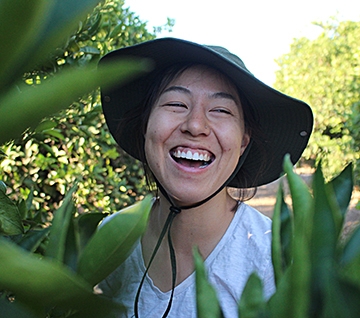
The research presentations are highly competitive. "Entomology 2019 was an exciting four days filled with 236 scientific sessions featuring 2,205 oral and 680 poster presentations with 3,653 attendees from 61 different countries," an ESA spokesman said. "This year was a record setting event with 1,150 students attending!"
Those in the (SysEB) Section study insect anatomy, classification, and history. The section focuses on systematics, evolution, and biodiversity, but it also includes morphology, ecology, population dynamics, genetics, phylogeny, nomenclature, biogeography, zoology, and other specialties.
Those in the PI-E section deal with insect interactions with plants. Topics include behavioral, ecological, and evolutionary relationships in natural landscapes, as well as integrated pest management (IPM) in agriculture, horticulture, forests, and lawn and garden. This includes such aspects as crop protection, host-plant response, plant pathology/vectors, pollination, biological control and microbial control.
Both Oberski and Kahl also served as members of the UC Linnaean Games Team, comprised of UC Davis and UC Berkeley graduate students, that competed with other university teams throughout the nation. The Linnaean Games, launched in 1983, are lively question-and-answer, college bowl-style competitions on entomological facts. The teams score points by correctly answering random questions.
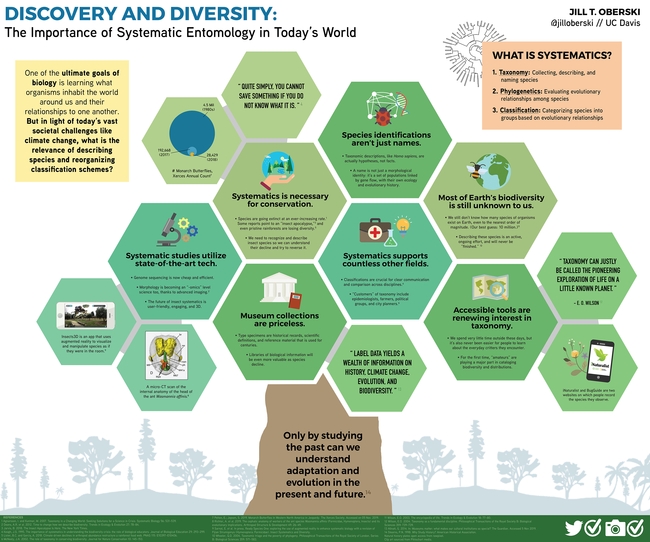
- Author: Kathy Keatley Garvey
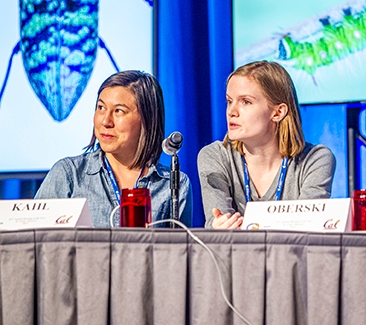
The team was eliminated in the first round. Some logistics issues--microphone mishaps and difficulty hearing the questions (issues later resolved)--complicated the session.
Previously the UC team won three national championships. This year the University of Florida team triumphed.
The Linnaean Games, launched in 1983, are lively question-and-answer, college bowl-style competitions on entomological facts and played by winners of the ESA branch competitions. The teams score points by correctly answering random questions.
The 2019 UC team, captained by Ralph Washington Jr., a UC Berkeley public policy graduate student who received his bachelor's degree in entomology at UC Davis, included five UC Davis doctoral students in entomology: Brendon Boudinot, Zachary Griebenow and Jill Oberski, all of the Phil Ward lab, UC Davis Department of Entomology and Nematology; and alternates Miles Dakin of the Christian Nansen lab and Hanna Kahl of the Jay Rosenheim lab.
Washington captained all four recent teams, and Boudinot helped anchor all of them.
The record:
- 2018: UC won the national championship (link to news story) in Vancouver, B.C., defeating Texas A&M Graduates, with Washington captaining the team and joined by Boudinot, Oberski and Griebenow, and Emily Bick (who received her doctorate this year) of the Christian Nansen lab. (No video of the championship round)
- 2017: The UC team did not compete. (Texas A&M won the national championship; see championship round on YouTube)
- 2016: UC won the national and international championships at the University of Florida, at the joint and international meeting of ESA and the International Congress of Entomology (ICE), defeating the University of Georgia. (See championship round on YouTube)
- 2015: UC won the national championship at the games held in Minneapolis, Minn., defeating the University of Florida. (See championship round on YouTube)
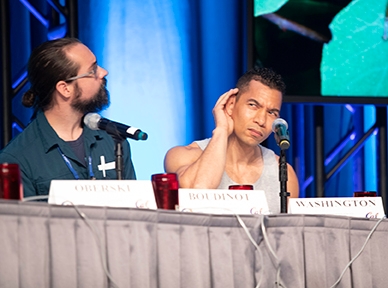
Some of the previous questions asked of the UC team during the championship rounds:
Question: What is the smallest insect that is not a parasite or parasitoid?
Answer: Beetles in the family Ptiliidae.
Question:Some species of mosquitoes lay eggs that can undergo diapause or aestivation. Give at least three cues that trigger the aquatic eggs to hatch.
Answer: Temperature, immersion in water, concentration of ions or dissolved solutes.
Question: Chikungunya is an emerging vector-borne disease in the Americas. Chikungunya is derived from the African Language Makonde. What means Chikungunya in Makonde?
Answer: Bending up.
Question: A Gilson's gland can be found in what insect order?
Answer: Trichoptera
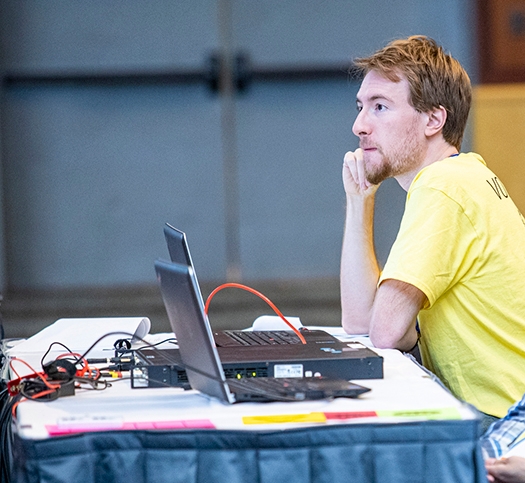
Answer: Cassidinae.
Question: The first lepidopteran sex pheromone identified was bombykol. What was the first dipteran sex pheromone identified? Give the trade or chemical name.
Answer: Muscalure, Z-9-Tricosene. It is also one of the chemicals released by bees during the waggle dance.
Question: What famous recessive gene was the first sex-linked mutation demonstrated in Drosophila by T.H. Morgan?
Answer: White
Question: Cecidomyiidae are known as the gall flies. What is unique about the species Mayetiola destructor, and what is its common name?
Answer: Mayetiola destructor is the Hessian Fly, a tremendous pest of wheat. It does not form galls.
Question: Nicrophorus americanus is listed under what legislative act?
Answer: The Endangered Species Act
Question: In what insect order would you find hemelytra?
Answer: The order Hemiptera.
Question: A 2006 Science article by Glenner et al. on the origin of insects summarized evidence that Hexapods are nothing more than land-dwelling crustaceans, which is to say that the former group Crustacea is paraphyletic with respect to the Hexapoda. What hierarchical name has been used to refer to this clade?
Answer: Pancrustacea
Question: What are the three primary conditions that define eusociality?
Answer: Cooperative brood care, overlapping generations, and reproductive division of labor
Founded in 1889, ESA is the world's largest organization serving the professional and scientific needs of entomologists and individuals in related disciplines. It is comprised of more than 7000 members, who are affiliated with educational institutions, health agencies, private industry, and government. Members are researchers, teachers, extension service personnel, administrators, marketing representatives, research technicians, consultants, students, pest management professionals, and hobbyists.
Resources:
Origin of Linnaean Games (Richard Levine in American Entomologist)
Previous Winners (Entomological Society of America)
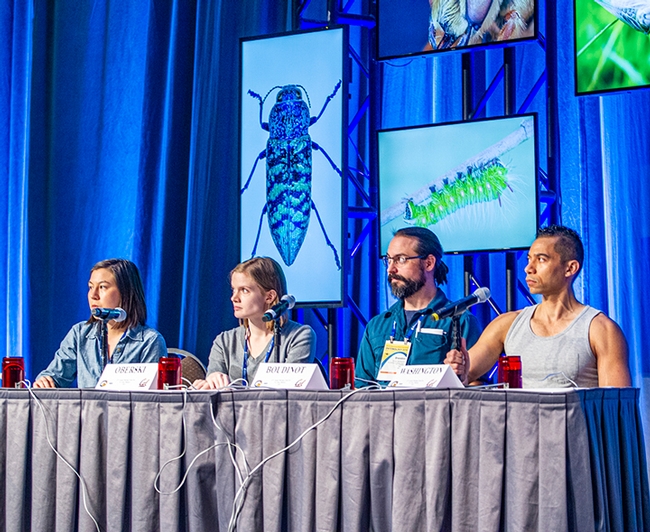
- Author: Kathy Keatley Garvey
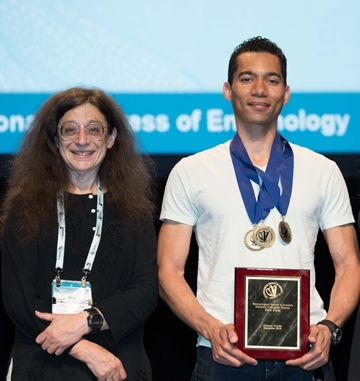
The Linnaean Games, launched in 1983, are lively question-and-answer, college bowl-style competitions on entomological facts and played by winners of the ESA branch competitions. The teams score points by correctly answering random questions.
This year's UC team, captained by Ralph Washington Jr., a UC Berkeley public policy graduate student who received his bachelor's degree in entomology at UC Davis, includes five UC Davis doctoral students in entomology: Brendon Boudinot, Zachary Griebenow and Jill Oberski, all of the Phil Ward lab, UC Davis Department of Entomology and Nematology; and alternates Miles Dakin of the Christian Nansen lab and Hanna Kahl of the Jay Rosenheim lab.
Washington has captained all three winning teams, and Boudinot has helped anchor all of them.
The record:
- 2018: UC won the national championship (link to news story) in Vancouver, B.C., defeating Texas A&M Graduates, with Washington captaining the team and joined by Boudinot, Oberski and Griebenow, and Emily Bick (who received her doctorate this year) of the Christian Nansen lab. (No video of the championship round)
- 2017: The UC team did not compete. (Texas A&M won the national championship; see championship round on YouTube)
- 2016: UC won the national and international championships at the University of Florida, at the joint and international meeting of ESA and the International Congress of Entomology (ICE), defeating the University of Georgia. (See championship round on YouTube)
- 2015: UC won the national championship at the games held in Minneapolis, Minn., defeating the University of Florida. (See championship round on YouTube)
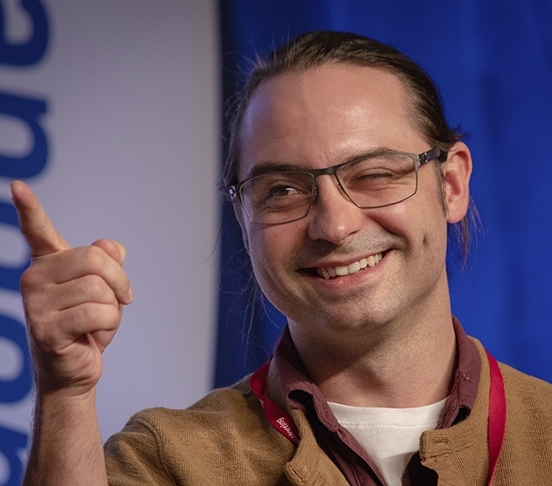
All branches of ESA conduct a Linnaean Games competition, with each branch sending the winner and the second-place winner to the nationals. The UC team has won the Pacific Branch (PBESA) competition multiple times. PBESA encompasses 11 Western U.S. states, plus several U.S. territories and parts of Canada and Mexico.
Some of the previous questions asked of the UC team during the championship rounds:
Toss-Up Question: What is the smallest insect that is not a parasite or parasitoid?
Answer: Beetles in the family Ptiliidae.
Bonus Question:Some species of mosquitoes lay eggs that can undergo diapause or aestivation. Give at least three cues that trigger the aquatic eggs to hatch.
Answer: Temperature, immersion in water, concentration of ions or dissolved solutes.
Toss-Up Question: Chikungunya is an emerging vector-borne disease in the Americas. Chikungunya is derived from the African Language Makonde. What means Chikungunya in Makonde?
Answer: Bending up.
Toss-Up Question: A Gilson's gland can be found in what insect order?
Answer: Trichoptera
Toss-Up Question: Certain Chrysomelid larvae carry their feces as a defensive shield. To what subfamily do these beetles belong?
Answer: Cassidinae.
Bonus Question: The first lepidopteran sex pheromone identified was bombykol. What was the first dipteran sex pheromone identified? Give the trade or chemical name.
Answer: Muscalure, Z-9-Tricosene. It is also one of the chemicals released by bees during the waggle dance.
Toss-Up Question: What famous recessive gene was the first sex-linked mutation demonstrated in Drosophila by T.H. Morgan?
Answer: White
Bonus Question: Cecidomyiidae are known as the gall flies. What is unique about the species Mayetiola destructor, and what is its common name?
Answer: Mayetiola destructor is the Hessian Fly, a tremendous pest of wheat. It does not form galls.
Toss-Up Question: Nicrophorus americanus is listed under what legislative act?
Answer: The Endangered Species Act
Toss-Up Question: In what insect order would you find hemelytra?
Answer: The order Hemiptera.
Toss-Up Question: The subimago stage is characteristic of what insect order?
Answer: The order Ephemeroptera
Bonus Question: A 2006 Science article by Glenner et al. on the origin of insects summarized evidence that Hexapods are nothing more than land-dwelling crustaceans, which is to say that the former group Crustacea is paraphyletic with respect to the Hexapoda. What hierarchical name has been used to refer to this clade?
Answer: Pancrustacea
Toss-Up Question: What are the three primary conditions that define eusociality?
Answer: Cooperative brood care, overlapping generations, and reproductive division of labor
In addition to serving on the Linnaean Games Team, Boudinot will be honored as the PBESA recipient of the John Henry Comstock Award, the top graduate student award. PBESA is one of six branches of the ESA.
Founded in 1889, ESA is the world's largest organization serving the professional and scientific needs of entomologists and individuals in related disciplines. It is comprised of more than 7000 members, who are affiliated with educational institutions, health agencies, private industry, and government. Members are researchers, teachers, extension service personnel, administrators, marketing representatives, research technicians, consultants, students, pest management professionals, and hobbyists.
Resources:
Origin of Linnaean Games (Richard Levine in American Entomologist)
Previous Winners (Entomological Society of America)
